污泥到底是不是危废?终于说清了!污泥处置八大国家标准汇总!
Source: Yongkang Zhongyi Manufacture & Trade Co., Ltd.Publication time:2022-11-09
Is sludge a hazardous waste? Many people have such doubts:
I compiled information on whether sludge is hazardous waste for reference
First of all, the sludge produced by public sewage treatment plants that are solely used to treat urban domestic sewage usually has no hazardous characteristics and can be managed as general solid waste.
In addition, the sludge produced by the treatment facilities that specially treat industrial wastewater (or simultaneously treat a small amount of domestic sewage) may have hazardous characteristics, so the hazardous characteristics of sludge should be identified according to the National Directory of Hazardous Wastes, the national environmental protection standard, the Technical Specifications for the Identification of Hazardous Wastes (HJ/T298-2007) and the identification standards for hazardous wastes.
Third, if the public sewage treatment plant with the main function of treating domestic sewage receives and treats industrial wastewater, and the industrial wastewater can stably meet the national or local pollutant discharge standards before being discharged into the public sewage treatment system, the sludge of the public sewage treatment plant can be managed according to the provisions of Article 1. However, in case of major changes in the discharge of industrial wastewater, the hazard characteristics shall be identified in accordance with Article 2.
In the fourth category, if an enterprise discharges industrial wastewater directly or indirectly outside its legal boundary, the effluent quality shall meet the national or local pollutant discharge standards; The sludge generated in the wastewater treatment process belongs to the solid waste being generated. The hazardous characteristics of the sludge shall be identified. The sludge shall be sampled in the wastewater treatment process according to the Technical Specifications for Hazardous Waste Identification, and the minimum number of samples shall be determined according to the amount of sludge generated.
Discrimination of several typical sludge
1. Electroplating wastewater and electroplating sludge with excessive heavy metals:
Electroplating sludge is a kind of hazardous waste, which often belongs to HW17, HW21, HW22 and HW23 at the same time. Electroplating wastewater with excessive heavy metals belongs to the scope of prevention and control of wastewater pollution, and is included in wastewater management. It is not applicable to the scope of the Law of the People's Republic of China on the Prevention and Control of Environmental Pollution by Solid Wastes, and is not a hazardous waste. Although the waste water exceeding the standard is not included in the hazardous waste management, according to the Judicial Interpretation of the High and Low Level Officials (2016 Edition), if the Class I heavy metals (such as lead, mercury, chromium, cadmium and arsenic) in the waste water exceed the standard by three times, or the Class II heavy metals (such as nickel, copper, zinc, manganese and vanadium) exceed the standard by more than 10 times, the criminal responsibility will be investigated in addition to the administrative punishment.
2. Sludge from domestic sewage treatment plant:
It belongs to solid waste, not hazardous waste. According to the HB [2010] No. 157 document, in the process of transfer management of such wastes, "a sludge transfer manifest system shall be established by referring to hazardous waste management" Referring to hazardous waste management, it means that this kind of sludge is not hazardous waste, but the management level should be improved, especially the account management should be strengthened to prevent spilling, dripping and illegal dumping during transportation. However, most of the sludge generated in the wastewater treatment process of industrial enterprises should be classified as hazardous waste (the determination method is mainly based on enterprise environmental assessment, industry rules, material source, expert identification, attribute identification, etc.) because of its excessive leaching toxicity, or other toxic and harmful substances and other hazardous characteristics.
3. Fly ash generated from domestic waste incineration:
It belongs to hazardous waste (HW18). However, after meeting the requirements of Article 6.3 of the Standard for Pollution Control on Domestic Waste Landfill (GB16889-2008), entering the domestic waste landfill for landfilling will not be included in hazardous waste management; On the other hand, if the pretreatment meets the relevant requirements of the Standard for Pollution Control on Cement Kiln Collaborative Disposal of Solid Wastes (GB30,485-2013), the collaborative disposal process is also included in the exemption management.
4. Sludge generated during sewage treatment in medical institutions:
Most of them are hazardous wastes. The Regulations on the Administration of Medical Wastes (Order No. 380 of the State Council) stipulates that "medical wastes refer to the wastes with direct or indirect infectivity, toxicity and other harmfulness generated by medical and health institutions in medical treatment, prevention, health care and other related activities." The "infectious wastes" in the Classified Catalogue of Medical Wastes (WYF [2003] No. 287) includes "other articles polluted by patients' blood, body fluid and excreta". The grid residue, sediment sludge and septic tank sludge generated in the sewage treatment process of medical institutions should be included in this category. The waste code in the new edition of the National Catalogue of Hazardous Wastes is 841-001-01.
If a medical institution has specially designed wastewater treatment process and made attribute judgment on sludge during EIA, if the management department believes that such sludge should be included in hazardous waste management, the final judgment should be made through hazardous waste identification procedures.
Then, share a five step method to identify whether the sludge is hazardous waste:
According to the National Catalogue of Hazardous Wastes and the Identification Standards for Hazardous Wastes - General Principles issued by the Ministry of Environmental Protection in conjunction with the National Development and Reform Commission and the Ministry of Public Security and the Technical Policy for Sludge Treatment, Disposal and Pollution Prevention in Urban Sewage Treatment Plants (Trial) jointly issued by the Ministry of Housing and Urban Rural Development, the Ministry of Environmental Protection and the Ministry of Science and Technology on February 28, 2009, whether sewage sludge is a hazardous waste can be determined in five steps, As shown in the figure below:
1、 Classification
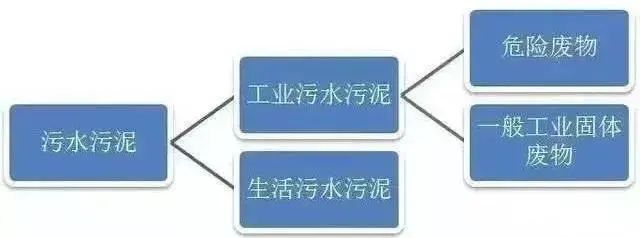
2、 Judgment basis
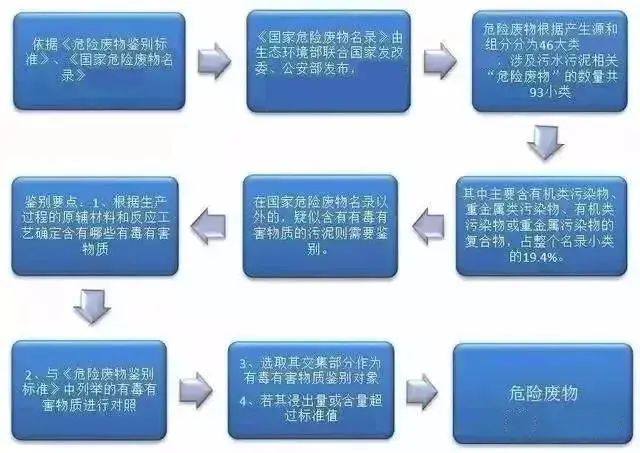
3、 How to supervise
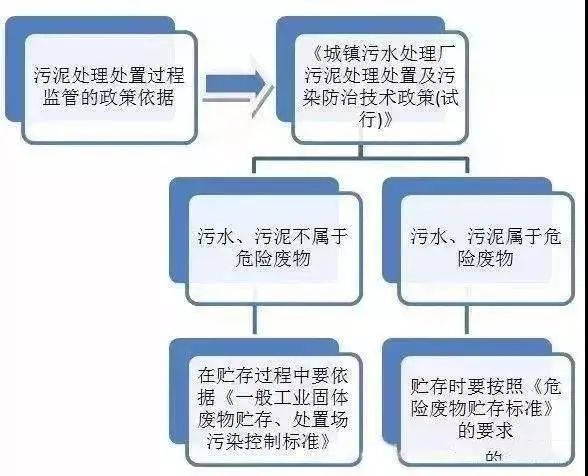
4、 Resource utilization

5、 Which can be exempted?

According to the Ministry of Emergency Management, the Safety Committee of the State Council recently issued the Three Year Action Plan for the Special Improvement of National Work Safety (referred to as the "Three Year Action Plan"), which defined two special implementation plans and nine special improvement implementation plans. The three year action for the special improvement started in April 2020 and ended in December 2022. It includes organizing the comprehensive investigation of hazardous wastes such as waste hazardous chemicals. Chemical parks and chemical enterprises are the key targets for remediation. It is required to implement the whole process supervision of hazardous waste storage, transportation and disposal to ensure the safe disposal of hazardous wastes.
As a result, the three-year campaign for special remediation of hazardous wastes has begun!
The special treatment of hazardous waste is one of the key points of the three-year special treatment - a special project for risk prevention and control of hazardous chemicals, which will be carried out in four stages.
As for the safety improvement of hazardous wastes, the Three Year Action Plan indicates that it should be carried out from several aspects, such as conducting hazardous waste screening, improving the hazardous waste management mechanism and accelerating the construction of hazardous waste disposal capacity. In order to ensure the whole process supervision of hazardous waste, relevant units should establish and improve management and control means from multiple aspects:
The first is to establish a standardized list and account of hazardous wastes, store hazardous wastes by classification and partition, and set up hazardous waste identification marks in the collection, storage, transportation and disposal, especially to strengthen the supervision and inspection of chemical parks, chemical and hazardous chemical units and hazardous waste disposal units within the jurisdiction.
The second is to implement the hazardous waste declaration and registration system, and incorporate relevant behaviors into credit management while seriously investigating and punishing, and implement joint punishment; At the same time, establish and improve the joint bill system of hazardous waste transfer from generation to disposal, use information technology to control the flow direction of hazardous waste, and conduct dynamic supervision;
The third is to establish a system of departmental linkage, regional cooperation, consultation and supervision of major cases, form a whole process supervision system, revise and improve the Pollution Control Standard for Hazardous Waste Storage, and use strict means and supervision to promote enterprises to implement relevant laws, regulations and standards.
Accelerating the construction of hazardous waste disposal capacity is the end link of hazardous waste disposal, which can not be ignored. In this regard, the Three Year Action Plan proposes that all localities should reasonably plan the distribution of disposal enterprises or enterprises' self use and disposal and other ways according to the type and quantity of hazardous waste generated in the region, strengthen the regional hazardous waste disposal capacity, and pay attention to high-risk hazardous waste, especially accelerate the research and development of comprehensive disposal technology and equipment.
The units that produce hazardous waste shall also formulate a hazardous waste management plan and report to the local environmental protection authorities at or above the county level the types, production, flow direction, hazard level, storage facilities, self utilization and disposal facilities or entrusted external units to use and dispose of hazardous waste and other relevant data and information. It should be noted that hazardous wastes shall not be stored for more than one year. It is strictly prohibited to store hazardous wastes in non hazardous wastes.
This means that in the field of hazardous waste treatment, a number of relevant mandatory national standards and industrial standards may be formulated and revised to regulate the development of hazardous waste treatment in enterprises and industrial parks, so as to reduce the production of hazardous waste in China and significantly improve the treatment capacity. (Part of the pictures are from the new environmental protection class, and the editor is from the online excellent hazardous waste)
At present, the total amount of sewage treatment in China is about 200 million tons/day, and the roughly calculated amount of wet sludge generated is about 200,000 tons/day, with an amazing output. However, the proportion of them properly disposed is still low. The current situation of sludge treatment and disposal in China is not optimistic.
According to relevant data, about 30 million tons of sludge generated annually in China has not been properly placed. The previous treatment method was to send it to the landfill. At present, sludge is mainly used as resource for disposal. Most sewage treatment plants in China have long service life, early construction time and low level of simultaneous sludge treatment. Due to the national and local attention, sludge treatment has been included in the sewage treatment process, but it still faces the dilemma of disproportionate production and disposal. On the one hand, the cost of sludge disposal is high; On the other hand, the technical route of sludge disposal is not perfect.
With regard to sludge treatment and disposal, China has issued a series of policies and regulations, such as the Technical Policy for Urban Sewage Treatment and Pollution Prevention and Control and the Discharge Standard of Pollutants for Urban Sewage Treatment Plants from 2000 to 2002; In 2009, the Ministry of Housing and Urban Rural Development, the Ministry of Environmental Protection and the Ministry of Science and Technology jointly issued the Technical Policy for Sludge Treatment and Disposal and Pollution Prevention (for Trial Implementation); In 2010, the Ministry of Environmental Protection issued the Guidelines for the Best and Feasible Technologies for Pollution Prevention and Control of Sludge Treatment and Disposal, the Technical Specifications for Sludge Treatment and Disposal in Urban Sewage Plants (Draft for Comments), and the Ministry of Housing and Urban Rural Development issued the Technical Guidelines for Sludge Treatment and Disposal in Urban Sewage Treatment Plants (Trial).
In the future, sludge treatment and disposal will be the next pass of the environmental pollution control battle, the next important hand of environmental protection, and the next outlet of the environmental protection market.
What are the six national standard limits for sludge disposal? How are sludge disposal classified? The relevant national standards are summarized as follows:
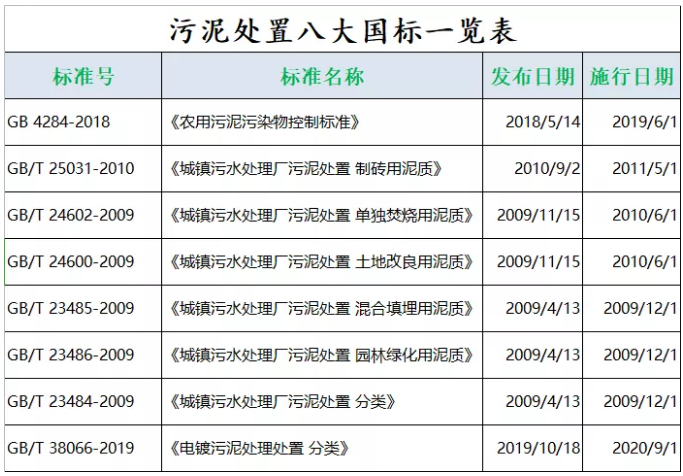
1 Control Standard for Pollutants in Agricultural Sludge (GB 4284-2018)
This standard specifies the pollutant control indicators, sampling, detection, monitoring and sampling methods for urban sewage treatment plants during agricultural use. The standard is applicable to the pollutant control of sewage sludge from urban sewage treatment plants in cultivated land, garden land and pasture land. When sludge products are used for agriculture, they are divided into Class A and Class B sludge products according to their pollutant concentrations. The pollutant concentration limits should meet the requirements of Table 1. See Table 2 for the service conditions of Class A and Class B sludge products.


When the sludge products are used for agriculture, their hygienic indicators and limits shall meet the requirements in Table 3.

When sludge products are used for agriculture, their physical and chemical indexes and limits shall meet the requirements in Table 4.

When the sludge products are used for agriculture, the accumulated annual consumption shall not exceed 7.5t/h ㎡ (on dry basis), and the continuous use shall not exceed 5 years.
2 Quality of Sludge for Brick Making from Sludge Disposal in Urban Sewage Treatment Plants (GB/T 25031-2010)
This standard specifies the sludge quality, sampling and monitoring for the sintering utilization of sludge from urban sewage treatment plants. The standard is applicable to the disposal of sludge from urban sewage treatment plants and the utilization of sintered bricks made from sludge. When sludge is used to make bricks, the physicochemical indexes of sludge shall meet the requirements in Table 1.

When sludge is used to make bricks, the sludge loss on ignition and radionuclide indexes shall meet the requirements in Table 2.

When sludge is used to make bricks, the concentration limit of sludge pollutants shall meet the requirements in Table 3.


When the sludge is used in the place where bricks are made and people contact, the hygienic indicators of sludge shall meet the requirements in Table 4.

3 Quality of Sludge for Individual Incineration of Sludge Disposal in Urban Sewage Treatment Plants (GB/T 24602-2009)
This standard specifies the sludge quality index, limit value, sampling and monitoring for the separate incineration and utilization of sludge from urban sewage treatment plants. The standard is applicable to the disposal of sludge from urban sewage treatment plants and the separate incineration and utilization of sludge.
When sludge is incinerated separately, its physical and chemical indexes and limits shall meet the requirements of Table 1. When selecting incinerator type, the sand content of sludge shall be fully considered.

When sludge is incinerated separately, it shall meet the requirements in Table 2.

The air pollutant emission standard of sludge incinerator shall meet the requirements of Table 3.
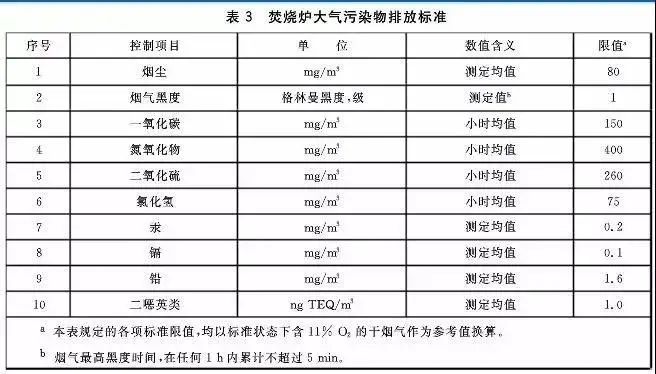
4 Sludge Disposal in Urban Sewage Treatment Plants Sludge Quality for Land Improvement (GB/T 24600-2009)
This standard specifies the sludge indicators, limits, sampling and monitoring for land improvement and utilization of sludge from urban sewage treatment plants. The standard is applicable to the disposal of sludge from urban sewage treatment plants and the land improvement and utilization of sludge. This standard can be referred to for the mud quality of drainage pipe dredging sludge used for land improvement.
When the sludge land is improved and utilized, its physical and chemical indexes and limits shall meet the requirements in Table 1.

When sludge land is improved and utilized, its nutrient indicators and limits shall meet the requirements in Table 2.

When the sludge land is improved and utilized, its microbiological indicators and limits shall meet the requirements in Table 3.

When sludge land is used for improvement, its pollutant indicators and limits shall meet the requirements of Table 4.


5 Quality of Sludge for Mixed Landfill of Municipal Sewage Treatment Plant Sludge Disposal (GB/T 23485-2009)
This standard specifies the sludge quality index, limit value, sampling and monitoring of municipal sewage treatment plant sludge entering domestic waste sanitary landfill for mixed landfill disposal and used as overburden. The standard is applicable to the disposal of sludge from urban sewage treatment plants and the mixed landfill of sludge and domestic waste.
When sludge is used for mixed landfill, its pollutant indicators and limits shall meet the requirements of Table 1.

When sludge is used as filling material for landfill covering soil, its pollutant indicators and limits shall meet the requirements of Table 2, and the basic indicators and limits shall meet the requirements of Table 3.


When the sludge is used as the final covering soil of the landfill, its biological indicators should also meet the requirements of GB 18918, as shown in Table 4.

6 Sludge Disposal of Urban Sewage Treatment Plants - Quality of Sludge for Landscaping (GB/T 23486-2009)
This standard specifies the sludge quality index, limit value, sampling and monitoring of urban sewage treatment plant sludge for landscaping. The standard is applicable to the disposal of sludge from urban sewage treatment plants and the utilization of sludge for landscaping.
Other physical and chemical indicators shall meet the requirements in Table 1 when sludge is used for landscaping.

When sludge is used for landscaping, its nutrient indicators and limits shall meet the requirements in Table 2.

When sludge is used in gardens and in contact with people, its biological indicators and limits shall meet the requirements of Table 3.

When sludge is used for landscaping, its pollutant indicators and limits shall meet the requirements of Table 4.


7 Classification of Sludge Disposal in Urban Sewage Treatment Plants (GB/T 23484-2009)
See Table 1 for sludge disposal classification of urban sewage treatment plants

8 Classification of Electroplating Sludge Treatment and Disposal (GB/T 38066-2019)






